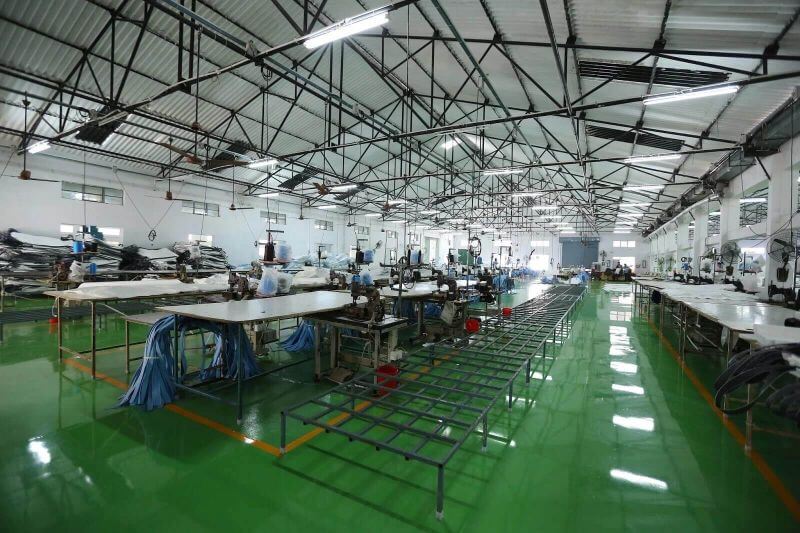



The logistics sector relies heavily on Flexible Intermediate Bulk Containers (FIBC), which are used to transport and store a wide range of dry, flowable goods like grains, powders, chemicals, and minerals. FIBC bulk bags are a popular choice because of their adaptability, toughness, and affordability. The majority of FIBC bulk bags hold at least 2,000 pounds and up to 4,000 pounds of product and provide dust control solutions during both filling and unloading.
By 2026, the global flexible intermediate bulk container (FIBC) market is more likely to reach $6.4 billion. At a time when more and more products are being packaged in FIBCs, all aspects of bulk bagging systems, including bulk bag filling, discharging, and conditioning, have become increasingly important. Therefore, special consideration must be given to the filling and discharge of FIBC bulk bags to ensure the security of the handling parties as well as the items themselves.
In this blog post, we will be discussing the ideal procedures for filling and discharging FIBC bulk bags.
It is crucial to be aware of the proper filling procedures for a seamless and risk-free discharging and transport process. Maintaining proper filling methods is the first step to ensuring the safety of both the products and the people handling them.
Prepping FIBC Bags before FillingIt is crucial to check that the FIBC bulk bag is undamaged and in good shape before filling it. The security of the bag and the goods being transported could be jeopardized by any flaws or damages. Before using the bag, make sure to check it for any cuts, holes, or punctures. It is also vital to confirm that the bag is appropriate for transporting goods by looking at its weight capacity.
• Use the Correct Filling EquipmentThe FIBC bulk bags must be filled using filling equipment that is appropriate for the substance being handled. The improper filling tools could cause the bag to be either overfilled or underfilled, which could cause accidents or product damage. Using filling equipment that is specially made for FIBC bulk bags is essential, as is making sure the bag is firmly fastened to the filling apparatus.
• Gradual Filling of the bulk bagInaccurate product distribution and overloading might cause the FIBC bulk bag to rupture or explode if it is filled too quickly. Filling the bag gradually and keeping a close eye on its weight are the best ways to prevent this. The capacity of the bag can also be increased by vibrating or compacting the bag as it is being filled.
• Prevent Emissions of DustA significant amount of dust can be produced when filling FIBC bulk bags. In addition to endangering the health of the workforce, this dust may taint products and harm equipment. It is best to utilize a dust control system, like a dust collector or baghouse, during filling to stop dust emissions.
• Use the Proper Tie-Off TechniqueIt is essential to tie off the FIBC bulk bag properly after it has been filled in order to stop product spillage during transportation. Depending on the style of the bag, there are a variety of tie-off techniques that can be utilized, including the star pattern, cross-tie, and crisscross tie. Follow the manufacturer's instructions and use the proper tie-off technique.
Proper consideration should be paid while discharging products from FIBC bags bearing in mind the safety of the parties involved in the process. Here are some of the best practices for effectively discharging FIBC bulk bags.
It is crucial to check the FIBC bulk bag for any damages or flaws before discharging it. The integrity of the bag may be compromised by any damage, such as rips or tears, making it dangerous to handle. It is also vital to confirm the bag's weight capacity and suitability for transporting goods.
To avoid any instability or tipping during discharge, the FIBC bulk bag must be placed on a flat, stable surface, like a pallet. The bag needs to be placed properly to make it simple to reach the discharge spout.
To avoid a sudden release of material that could lead to product loss and put workers at risk, it's crucial to open the discharge spout gently. A lot of dust can be produced when the spout is opened too quickly, endangering the health of the workers and harming their equipment.
Discharging them can also generate a lot of dust, much as filling FIBC bulk bags. It is advisable to utilize a dust control system, like a dust collector or baghouse, during discharge to stop dust emissions.
An FIBC bulk bag may safely carry a maximum weight, which is known as the Safe Working Load (SWL). A bag's integrity may be compromised by exceeding the SWL, which could lead to failure and product loss as well as a safety issue for employees. Make sure to follow the SWL and not go over it when discharging.
The FIBC bulk bag should not be handled manually during discharge as this could be harmful to the personnel. Moving the bag should instead be done with the aid of mechanical handling tools like forklifts or pallet jacks.
The filling and discharging of FIBC bulk bags require careful attention to ensure worker and product safety. Following the above best practices will help ensure the secure and effective handling of FIBC bulk bags and lower the possibility of mishaps or equipment damage.
At Virgo polymers, our key concerns are security and dependability because we understand that it is imperative to use bulk bags with considerable caution, regardless of where you got them. We examine in-depth safety data so that our FIBC bags are effectively applicable for filling and discharging processes.
Call us to know more @ +91 90030 48815 or email us at info@virgopolymer.com
